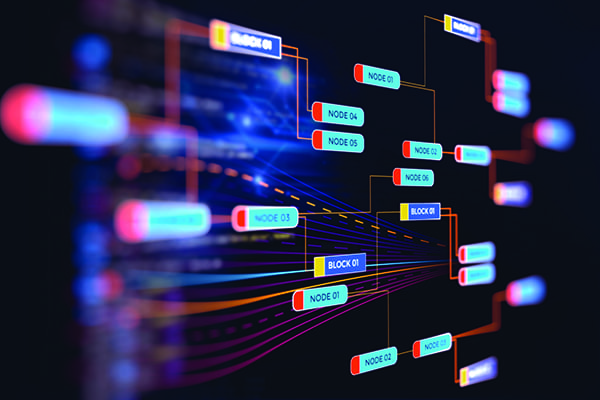The POWER Interview: How Modern Control System Technology Is Changing Power Plant Operation
The post The POWER Interview: How Modern Control System Technology Is Changing Power Plant Operation appeared first on POWER Magazine.

Distributed control systems (DCSs) and programmable logic controllers (PLCs) have been commonplace in power plants for decades, but the technology has not been stagnant. Today's systems are beginning to incorporate artificial intelligence (AI) and machine learning (ML) to take plant control to a whole new level.
To get an insider's perspective on how these systems are changing operations, POWER posed some questions about modern control system technology to Akshay Patwal, strategic business manager with Siemens Energy. Patwal leads the development and commercialization of digital business transformation projects, using big data platforms and analytics, to create data-driven services. He has been pioneering the building of digitalization and big data-based framework by developing and implementing company-wide platforms, systems, and business processes to maximize the value of enterprise data, driving performance improvement, cost reduction, and revenue generation. He is an expert and thought-leader on data management, data analytics, and visualization technologies in the energy industry, so he obviously has a wealth of knowledge on the subject.
 Akshay Patwal is strategic business manager with Siemens Energy. Courtesy: Siemens
Akshay Patwal is strategic business manager with Siemens Energy. Courtesy: SiemensPOWER: Modern power plants have had digital technology, such as DCSs and PLCs, for decades. How has the technology changed over the years? What can today's systems do that five- or 10-year-old technology could not?
Patwal: DCSs and PLCs have played a key role in controlling operations in power plants. In the past few decades, the control systems have evolved from platforms with proprietary software to totally integrated, vendor-agnostic plant automation platforms. The technology has evolved from simply monitoring and acquiring data to providing many more capabilities to optimize performance, predict impending outages, and maximize plant asset utilization.
Recent DCSs house new capabilities such as fleet management, asset diagnostics, performance monitoring, alarm handling during a fault, and prioritizes messages and simplifies actions to be taken in the event of a fault. It also ensures smooth daily operations through analysis, diagnostics, shift handovers, logs, and documentation management. Due to enhancements in computing power, with a reduction in the size of hardware such as PLCs, the processing and actions take place much quicker and more efficiently.
In traditional control systems, dedicated subsystems were provided for each specific task. However, the concept of embedded component services in the recent DCSs eliminates subsystems, is object oriented, and keeps data reliability. All the information on individual processes is integrated into a data object from engineering, operations, planning, diagnostics, alarming, and archiving. This provides consistent views of all services at all times, makes it vendor hardware-agnostic, and there is no subsystem differentiation.
The newer platforms are based on client-server architectures, where there is level separation with protocol changes between field, automation, application, operations, and monitoring levels. This provides maximum availability of the control system and communication infrastructure, all the components are available remotely from anywhere globally, and security by design (this is an approach to software and hardware development that prevents vulnerabilities in the system, and makes it impervious to attack through continuous testing, authentication safeguards, and adherence to best programming practices).
The human-machine interfaces (HMIs) have got smarter and provide key prioritized information during the handling of an event and alarms. The HMI guides the operator to function in an appropriate manner by delivering the right information in the right manner at the right time. The DCS provides detailed information about the alarms and warnings for quicker resolution. Relevant root-cause analyses, access to required data, and precise handling of alarms for quicker reaction is provided seamlessly. The alarm-handling system simplifies operations in the resolution of the fault. Specific key performance indicators, alarm count and classification, and alarm indicator prioritization helps the operator deal with the situation effortlessly.
The other key aspect of modern DCSs is the flexibility in the connectivity into internal and external networks, third-party system access, and integration of internal and external systems for integrated operations. Previously, traditional DCSs based on propriety protocols could be connected to an HMI, and the individual HTML applications were accessed within the operator's work environment. The implementation of cloud architecture for data storage and analysis has provided a secure way to store data and analyze them accordingly.
The intention of the newer DCSs is to serve for the entire lifetime of the power plant. Therefore, upgrades, migrations, and concepts are part of the development lifecycle. This allows users to run different generations of control systems in parallel for flexibility to cater to all the lifecycle concepts, as per requirements. As a result, the DCSs can be updated online, where updates and security patches are installed, and new features can be added without shutting down the plant.
The traditional DCSs house only malware protection and patch updates to prevent cyberattacks. However, due to an increase in the importance of data, and increased cyberattacks, there has been a significant rise in cyberattack prevention applications. The current security zone architecture is based on cybersecurity standards from the North American Electric Reliability Corp. (NERC) Critical Infrastructure Protection (CIP) and VGB. There is also a layer of demilitarized zones (DMZs), firewalls, terminal servers, VPN encryption, and data and security gateway to secure communication within the plant and beyond. The existing cybersecurity packages in the DCSs deal with malware protection, network intrusion detection, application whitelisting, security event monitoring, and configuration change monitoring. The current hardware is updated online with new security patches deployed from a central server without any downtime.
As an added benefit, newer DCSs also include remote expert centers (RECs) to provide another layer of customer service to deal with customer problems around fault management. The REC provides access to qualified specialists to diagnose and resolve faults, organize inventory, provide engineering support, and install updates. This aspect has gained popularity among utilities as it acts as a preventive layer to reduce the possibility of occurrence of an emergency condition.
POWER: Where is the industry in the evolution of AI and ML? Is it still an infant technology or are benefits being experienced today? Can you provide specific examples where it is paying off for early adopters?
Patwal: The role of AI and ML is still in its infancy in power generation. AI refers to the simulated intelligence in assets, and ML is a part of AI, which trains the asset to a set of data to perform specific tasks. Renewable energy is one of the areas in power generation that has gained some traction from the power of AI, ML, predictive modeling, and data science. It has achieved lower costs, better predictions, and higher revenue.
AI and ML offer the following capabilities over the current systems:
- Better Computational Power. Better computational power allows the system to perform faster, more accurate and reliable analyses with bigger and varied dataset.
- Advanced Algorithms. Newer and advanced algorithms train assets in a better way to perform work better and learn of every iteration.
- Big Data and Hybrid Transaction/Analytics Processing (HTAP) Systems. Big data and HTAP systems provide more power into real-time insights and optimize decision-making capabilities.
I believe utilities have great potential to adopt AI and ML in the near future and some cases could be:
- Short-Term Load Forecasting. ML algorithms are used for learning energy demand and generation, and forecast supply and demand in real time to optimize load dispatch. It's been observed that National Grid is hoping to reduce national energy usage in the UK by 10%.
- Yield Optimization. The optimization of generation efficiency with real-time adjustments across assets is done by monitoring and optimizing turbine operations, which leads to energy production increase by about 20%.
- Predictive Maintenance. The usage of drones with ML algorithms for asset inspections, where they are trained using deep-learning algorithms to identify asset defects and predict failures without interruption in operations. This would result in increased availability due to reductions in interruption.
- Demand Management. The ML algorithms train the system to understand the energy demand and supply, and guides the management of a portfolio of storage assets to support the grid. Demand response programs can be designed based on the results of these analyses.
- Asset Performance Improvement. The performance trends can be studied to understand the behavior of the asset, and ML algorithms can guide the operator to take the necessary actions to maintain the performance at the desired level.
- Remote Fault Detection and Diagnostics. The ML algorithms can train the system with respect to normal operating data and anomalies. This will allow the system to identify anomalies and prioritize respective alarms and fault detection, and guide the diagnostics to resolve the issue.
- Remote Field Support. Based on outage details and field work needed, ML algorithms train the system to prepare concerned parties to perform the right tasks for it.
- Risk and Compliance. I believe AI plays a key role in cybersecurity as it will learn from the varied cyberattacks and prepare the system to be alert for future cyberattacks. The system gets trained by the ML algorithms and can easily identify future threats, allowing operators to take necessary actions.
- Fleet Management. ML algorithms will train the system to understand fleet level performance, asset diagnostics, and monitoring to ensure that the fleet operations are fine.
The use cases mentioned above provide a wide range of exciting possibilities, but changes are not easy. A few companies in power generation have adopted AI and ML for the above use cases, but there is a long way to go to gain benefit from it.
-Aaron Larson is POWER's executive editor (@AaronL_Power, @POWERmagazine).
The post The POWER Interview: How Modern Control System Technology Is Changing Power Plant Operation appeared first on POWER Magazine.